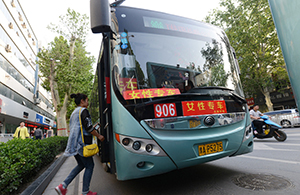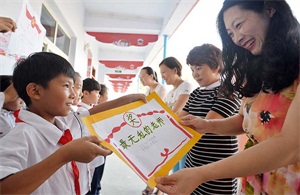First quarter data shows L-shaped growth a long-term prospect
(chinadaily.com.cn) Updated: 2016-05-12 13:48

Recent reviews and discussions around the first quarter data became heated after the People’s Daily’s newspaper, regarded as authoritative voice of the central government, warned that reforms are still necessary.
In an opinion piece it said: “Although the economy has lately made good progress, the reforms are still necessary in order to ensure healthy macro-economic development. L-shaped growth would be a long-term trend.”
The warning came as National Bureau of Statistics (NBS) and People's Bank of China (PBOC) released first quarter data interpreted by scholars and media as positive. The figures show that the overall GDP grew 6.7 percent year on year, which is within the growth range set for this year and remarkable given sluggish global recovery.
Other indicators include fixed-asset investment with annual nominal growth rate of 10.7 percent and 6.2 percent grown in the property market, a marked improvement from 5.2 percent rate in the same period last year. Retail sales rose by 10.3 percent and urban residents’ per capita disposable income surged by 8.7 percent nominal growth year on year.
All these figures have raised people’s hope, with some claiming that there’s a possibility that China’s economy could see even sharp rebound as V-shape or a positive trend as U-shape.
In response to this, People’s Daily spoke with an anonymous expert dubbed “authoritative insider”, to set the tone.
The source said: “L-shaped growth mode would not only remain for one or two years, but as long as the basic situation of aggregate demand downturn and excess production capacity fundamentally changes. Taking advantage of one period’s positive trend then sustaining high-speed growth in several successive years may not work out.”
Because inherent contradictions still remain, new problems are popping up. Investment-driven engine still accounts for generating most growth, some local governments are struggling with pressure of balancing budgetary revenues and expenditures. Economic risks occurrence probability has risen in many areas, especially as investment by private enterprises declines sharply. Rumors of real estate bubbles, excess capacity, non-performing loans, local government debts, stock market, foreign currency market, bond market and illegal fund-raising are are some of the biggest challenges. Regions with relatively weak market-based economy and inferior Industries face uncertain future as economy slows down. Unemployment still poses pressure on individuals and government.
New impetus could hardly shoulder the responsibility in short term to counteract the negative factors due to the complexity of situation. It needs time to grow mature. Particularly, the principal problem now is structural not periodical. By keeping the pace of processing structural reform focused on supply-side and tackling the institutional problems could help the whole society to offer a better steady environment for people.
Among the five main tasks put forward by central government as part of the supply-side reform, apart from decapacity in industries and destocking of property market, the two aspects being discussed mostly by experts and media, the “authoritative insider” also suggested three other areas: Stop bailing out failing zombie companies with implicit guarantee and deal with illegal fund-raising to de-leverage; enhance taxation reduction and simplify administrative examination and approval to cut costs; improve efficiency of anti-poverty programs, strengthen scientific innovation and enhance the mechanism for infrastructure construction to improve weak links .
Despite the challenges, the source underlines that the future of Chinese economy is bright with enormous potential, so the public should not worry too much about the growth rate. Panic or over-expectation over the fluctuation of economic indicators in short term will not help.
( Wu Zheyu organized from People's Daily and public information. )

I’ve lived in China for quite a considerable time including my graduate school years, travelled and worked in a few cities and still choose my destination taking into consideration the density of smog or PM2.5 particulate matter in the region.











